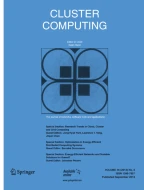Abstract
The paper presents a multi-level hierarchical approach which models the oligopolistic behavior of carriers in maritime freight transportation networks. With the merger of the carriers’ industry and some dominant carriers in today’s shipping markets, carrier competition frequently exhibits an oligopolistic nature. This study considers the following three types of carriers; ocean carriers, land carriers, and port terminal operators. The oligopolistic ocean carriers, land carriers, and port terminal operators compete with each other in their pricing and routing decisions. The carriers determine service charges and delivery routes at different parts of the multi-modal freight network, creating hierarchical relationships. When using a game theoretic approach, ocean carriers become the leaders in an oligopoly shipping market. When dealing with individual carrier problems, the Nash equilibrium reveals the optimal decision where each carrier obtains the greatest profit. A three-level model is formulated to capture the interactions among different types of carriers. The validity and capability of the model gets demonstrated through an empirical example.
Similar content being viewed by others
References
Top 100 operated fleets. www.alphaliner.com. Assessed 25 June 2010
Luberoff, D., Walder, J.: U.S. Ports and the fundings of intermodal facilities: an overview of key issues. Transp. Q. 54, 23–45 (2000)
Harker, P.T.: The state of the art in the predictive analysis of freight transport systems. Transp. Rev. 5, 143–164 (1985)
Crainic, T.G.: Handbook of Transportation Science, 2nd edn. Kluwer Academic, Dordrecht (2002)
Valsaraj, V.: Stochastic and dynamic network design in freight transportation network. Thesis, The University of Texas at Austin (2008)
Wang, Y.A.: Bi-level programming approach for the shipper-carrier network problem. Thesis, New Jersey Institute of Technology (2002)
Zhang, T., Zhao, Q., Wu, W.: Bi-level Programming Model of Container Port Game in the Container Transport Supernetwork. Korean Society for Computational and Applied Mathematics, Seoul (2008)
Fang, S.C., Peterson, E.L.: Economic equilibria on networks. Mathematics Research Report 80-13, Department of Mathematics, University of Maryland, Baltimore (1980)
Florian, M., Los, M.: A new look at static spatial freight equilibrium models. Reg. Sci. Urban Econ. 12, 579–597 (1982)
Harker, P.T.: Prediction of intercity freight flows: theory and application of a generalized special price equilibrium model. PH.D. Thesis, University of Pennsylvania, Philadelphia (1983)
Friesz, T.L., Tobin, R.L., Smith, T., Harker, P.T.: A nonlinear complementarity formulation and solution procedure for the general derived demand network equilibrium problem. J. Reg. Sci. 23, 337–359 (1983)
Freisz, T.L., Hacker, P.T., Tobin, R.L.: Alternative algorithms for the general network spatial price equilibrium problem. J. Reg. Sci. 24, 475–507 (1984)
Pang, J.S.: Solution of the general multicommodity spatial equilibrium problem by variational and complementarity method. J. Reg. Sci. 24, 403–414 (1984)
Harker, P.T., Freisz, T.L.: Prediction of intercity freight flows: theory. Transp. Res. 20B, 139–153 (1986)
Harker, P.T., Freisz, T.L.: Prediction of intercity freight flows: mathematical formulations. Transp. Res. 20B, 155–174 (1986)
Harker, P.T., Freisz, T.L.: The use of equilibrium network models in logistics management: with application to the U.S. coal industry. Transp. Res., Part B, Methodol. 18, 457–470 (1986)
Dafermos, S., Narguney, A.: Oligopolistic and competitive behavior of spatially separated markets. Reg. Sci. Urban Econ. 17, 245–254 (1987)
Harker, P.T.: Multiple equilibrium behaviors on network. Transp. Sci. 22, 39–46 (1988)
Guelat, J., Florian, M., Crainic, B.C.: A multimode multiproduct network assignment model for strategic planning of freight flows. Transp. Sci. 24, 25–49 (1990)
Miller, T.C., Tobin, R.L., Friesz, T.L.: Stackelberg games on a network with Cournot–Nash oligopolistic competitors. J. Reg. Sci. 31, 435–454 (1991)
Hurley, W.J., Petersen, E.R.: Nonlinear tariffs and freight network equilibrium. Transp. Sci. 28, 236–245 (1994)
Fernandez, J.E., De Cea, J., Soto, A.O.: A multi-modal supply-demand equilibrium model for predicting intercity freight flows. Transp. Res., Part B, Methodol. 37, 615–640 (2003)
Agrawal, B.B., Ziliaskopoulos, A.: Shipper-carrier dynamic freight assignment model using a variational inequality approach. Transp. Res. Rec. 1966, 60–70 (2006)
Cheng, T.C.E., Wu, Y.N.: A multiproduct, multicriterion supply demand network equilibrium. Oper. Res. 54, 544–554 (2006)
Yang, H., Zhang, X., Meng, Q.: Stackelberg games and multiple equilibrium behavior on networks. Transp. Res., Part B, Methodol. 41, 841–861 (2007)
Xu, N., Holguin-Veras, J.A.: Dynamic model of integrated production-transportation operations. In: Transportation Research Board 2009 Annual Meeting (2009)
Xiao, F., Yang, H.: Three-player game-theoretic model over a freight transport network. Transp. Res., Part C, Emerg. Technol. 15, 209–217 (2007)
Bureau of Transportation Statistics (BTS): World maritime container traffic 1995–2008 (2010)
Kuroda, K., Takebayashi, M., Tsuji, T.: International container transport network analysis considering port-panamax class container ships. Transp. Econ. 13, 369–391 (2005)
Zan, Y.: Analysis of container port policy by the reaction of an equilibrium shipping market. Marit. Policy Manag. 26, 367–381 (1999)
Min, H., Guo, Z.: Developing bi-level equilibrium models for the global container transportation network from the perspectives of multiple stakeholders. Int. J. Logist. Syst. Manag. 362–379 (2010)
Dimitriou, L., Stathopoulos, A.: An agent-based framework for designing competitive transportation systems. Int. J. Ind. Syst. Eng. 7, 90–109 (2011)
Lee, H.S., Boile, M., Theofanis, S.: Modeling carrier interactions in an international freight transport system. international journal of information systems and supply chain management (2013, in press)
Mizutani, M., Tsuchiya, K., Takuma, F., Ohashi, F.: Estimation of the economic benefits of port development on international maritime market by partial equilibrium model and scge model. J. East. Asia Soc. Transp. Stud. 6, 892–906 (2005)
Weskamp, A.: Existence of spatial Cournot equilibrium. Reg. Sci. Urban Econ. 15, 219–227 (1985)
Nagurney, A.: Network Economics: A Variational Inequality Approach. Kluwer Academic, Dordrecht (1999)
Friesz, T.L., Kwon, C.H.: Strategit freight network planning models and dynamic oligopolistic urban freight networks. In: Handbook of Transport Modelling, pp. 611–631. Elsevier, Amsterdam (2008)
Author information
Authors and Affiliations
Corresponding author
Appendix
Appendix
Rights and permissions
About this article
Cite this article
Lee, H., Boile, M., Theofanis, S. et al. A freight network planning model in oligopolistic shipping markets. Cluster Comput 17, 835–847 (2014). https://doi.org/10.1007/s10586-013-0314-3
Received:
Revised:
Accepted:
Published:
Issue Date:
DOI: https://doi.org/10.1007/s10586-013-0314-3
